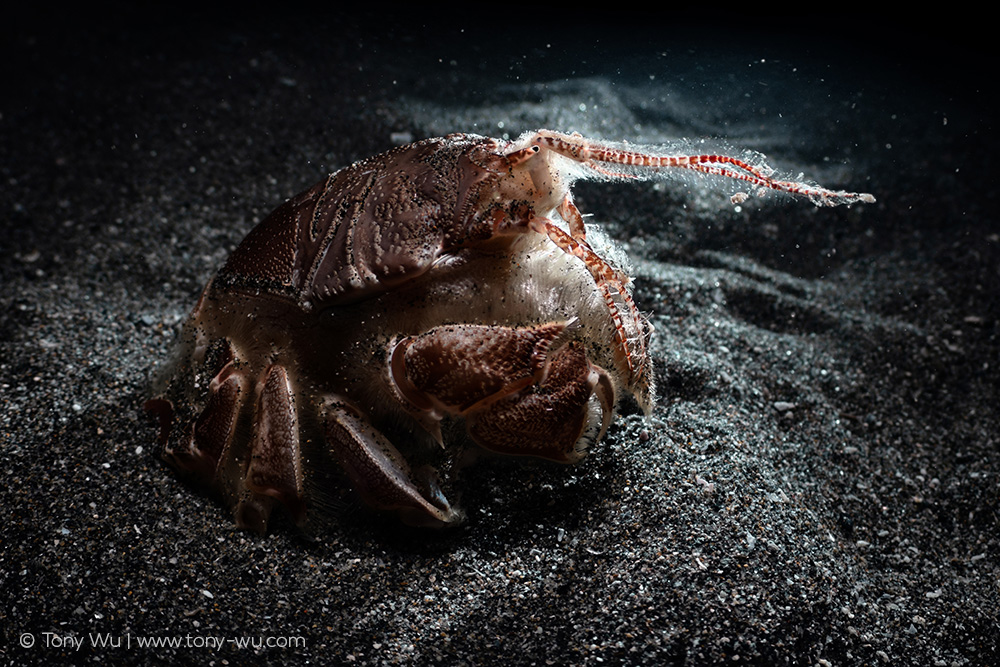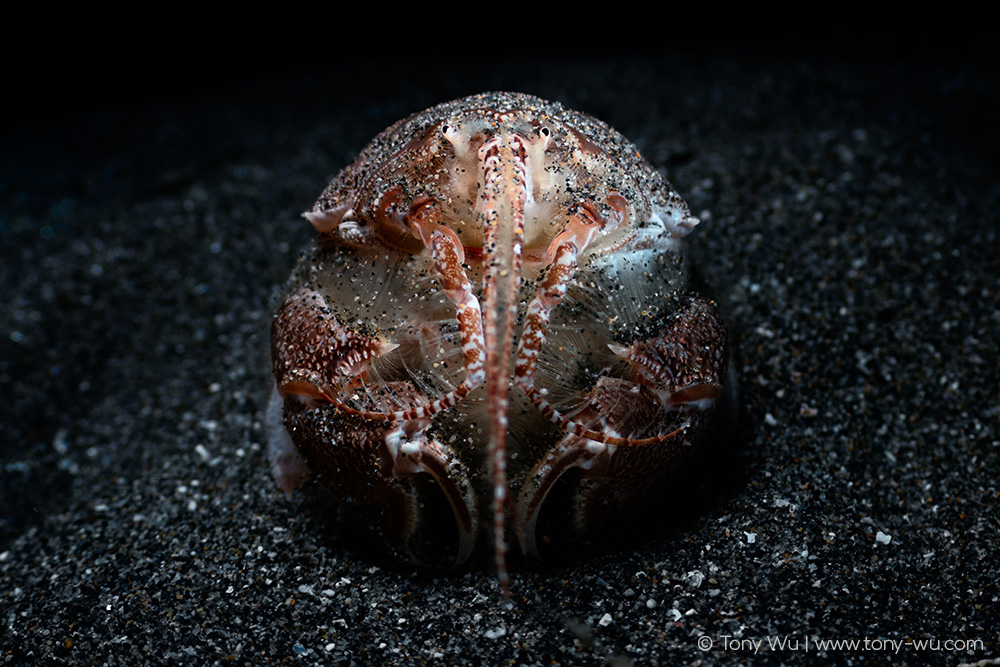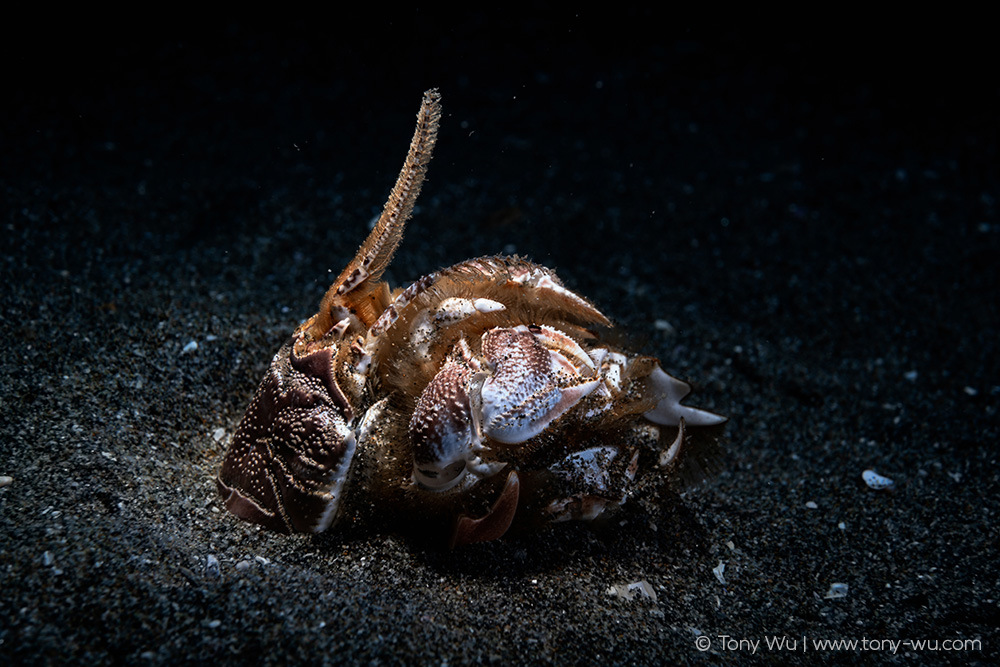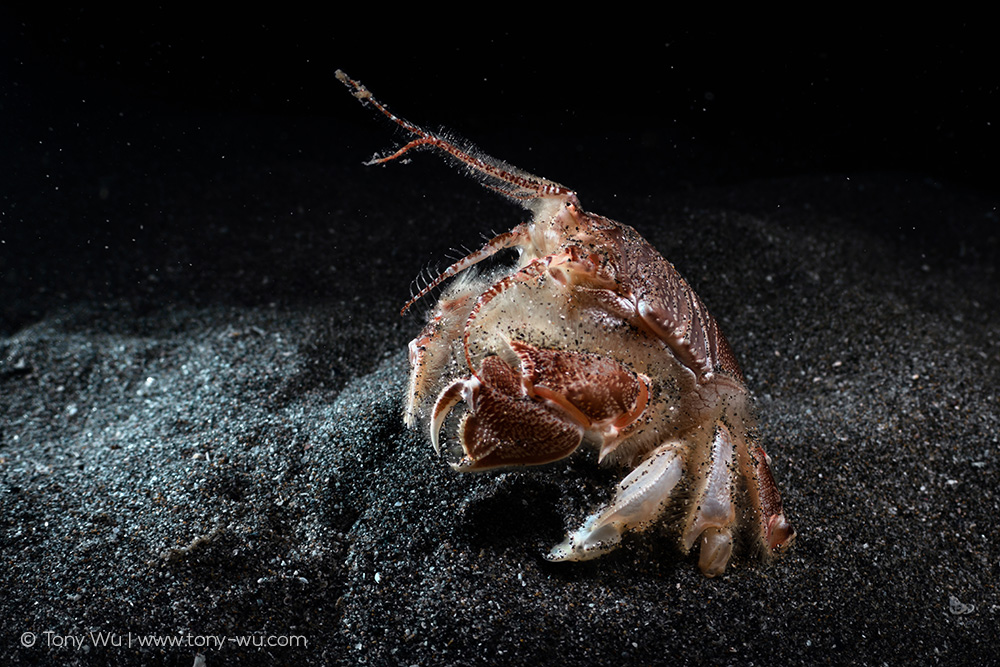I love coming across things that I never even knew I didn’t know anything about, you know?
Take Lophomastix japonica for example.

It is a crustacean, a type of spiny sea crab, though technically not a true crab (infraorder Brachyura). It is one of many members of the infraorder Anomura that have evolved in a similar manner as the Brachyura crabs—a phenomenon called convergent evolution.
It is not always easy to tell the two branches of evolution apart. King crabs, for instance, were once considered true crabs but are now generally thought to be anomurans that derived from hermit crabs. To complicate matters, some true crabs seem to be evolving to look less like crabs and more like anomurans—spanner crabs being an example.
In general though, true crabs have four pairs of legs (besides their claws) visible, while anomurans have three. The carapace (hard shell on top) of true crabs is a single fused structure; anomurans tend to have what look like sutures holding interlocking parts together. True crabs tend to be wider than they are long; anomurans not necessarily so. True crabs tuck their tails completely underneath, flattened to their bodies; anomuran rear ends are not thus-affixed.
Examples of some anomurans you might be familiar with—porcelain crabs, squat lobsters, and the aforementioned hermit crabs and king crabs.
Lophomastix japonica crustaceans are known as kita-kuda-hige-gani (キタクダヒゲガニ) in Japanese. Yes, it’s a mouthful.
The species makes its home in relatively shallow areas of the northwest Pacific—Japan, Korea, Russia and northern parts of the Yellow Sea. Despite the dearth of knowledge about these animals, it is more than possible that these animals are common, abundant even. In addition, fossils found in western Kamchatka (1) and Washington state (2) suggest that Lophomastix crabs have been around for a long time—tens of millions of years.

Until recently, I had no idea these animals existed…for good reason.
Few people have ever seen one alive (or not alive, for that matter).
The species is often described as being cryptobenthic. Meaning—in normal speak—Lophomastix japonica excels at playing hide-and-seek, primarily by living beneath the surface of the ocean floor.
They burrow underground, rarely showing themselves it seems. I am not sure what they eat, because I can’t find any information on the subject. I surmise that they prey on creepy-crawlies in the substrate, polychaete worms and the like. More to the point, I am not sure how they breathe if they’re almost always underground. I'm also fascinated by how hairy they are.
Anyway, I came across a few of these enigmatic animals last year.
Why animals that are so obsessive about their privacy revealed themselves was a bit of a head-scratcher, but part of the answer came with finding moulted exoskeletons like this:

All crustaceans moult in order to grow. So it makes sense that these animals would need to do the same.
The exoskeletons that I saw were all similar, projecting upward from the sand, secured by the parts still beneath the substrate. It would be logical to guess that these crustaceans shed their skins while exiting from the posterior end to resume their subterranean lifestyles.
I speculate that such moulting is synchronised for the purpose of spawning.
To be clear, I did not see spawning, or even see any two at the same time for that matter. But I know that other (perhaps all?) crustaceans moult before spawning.
Putting two and two together, I figure that these animals probably lead solitary, concealed lives. At the appointed time, they emerge to moult. And this would be the optimal circumstance for making cryptic baby lophomastixes.

It is easy to be under the impression that humanity knows a lot about the world. Lophomastix japonica is living proof that there is always more to discover, more to ponder.
(1) Marin, Ivan & Vasily, Kolevatov. (2022). A living fossil: modern and paleontological records of spiny sand crab Lophomastix japonica (Duruflé, 1889) (Anomura: Blepharipodidae) from the Russian coasts of the Sea of Japan and fossil Lophomastix sp. from the western coast of Kamchatka (Sea of Okhotsk). Arthropoda Selecta. 31. 34-40. 10.15298/arthsel.31.1.04.
(2) Schweitzer CE, Boyko CB. First report of the genus Lophomastix Benedict, 1904 (Crustacea: Decapoda: Albuneidae) in the fossil record and a reappraisal of the status of Blepharipoda brucei Rathbun, 1926. Journal of Paleontology. 2000;74(4):631-635. doi:10.1666/0022-3360(2000)074<0631:FROTGL>2.0.CO;2